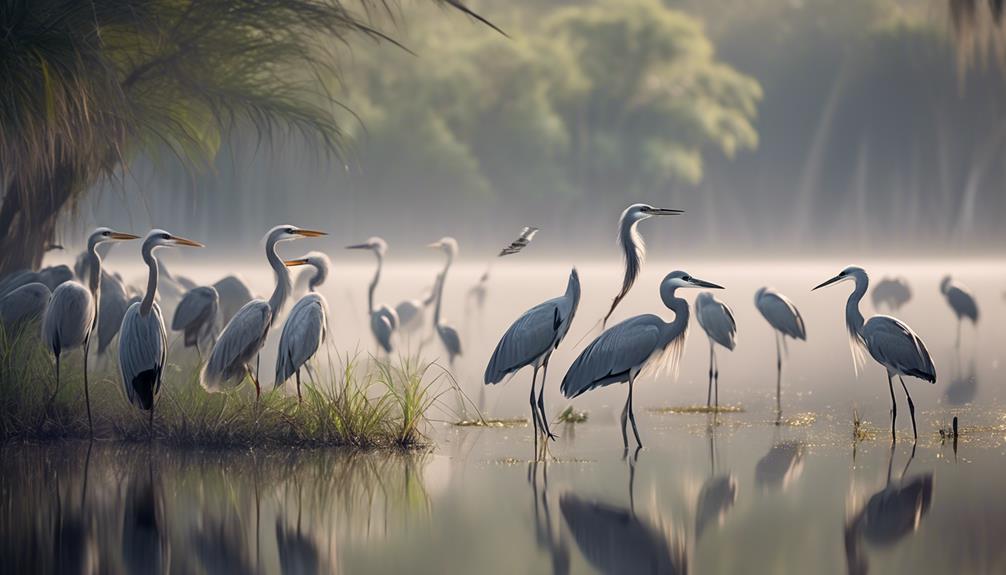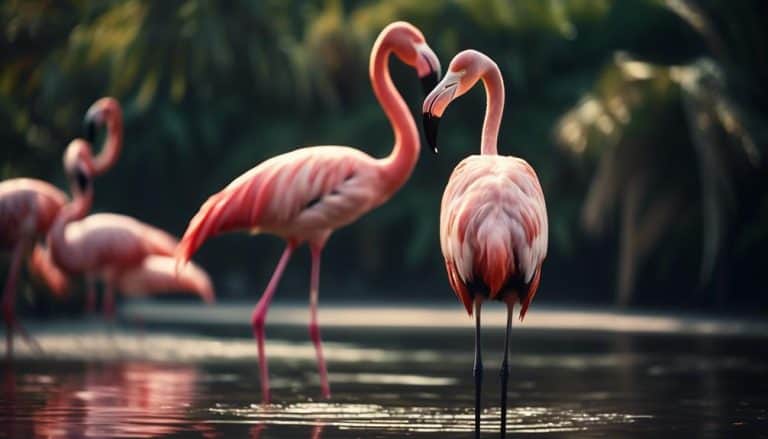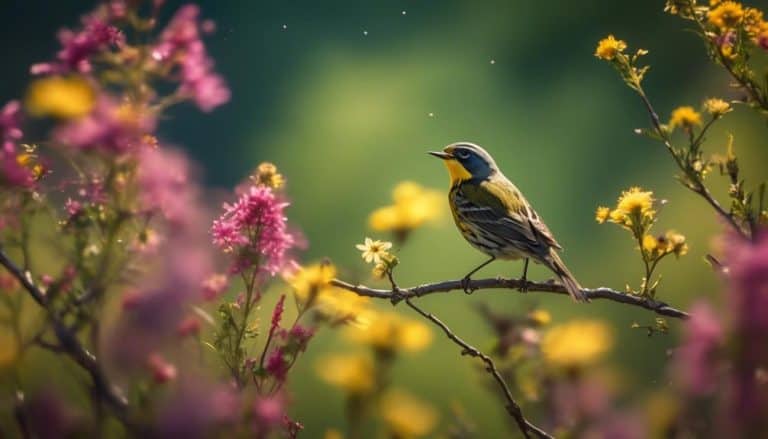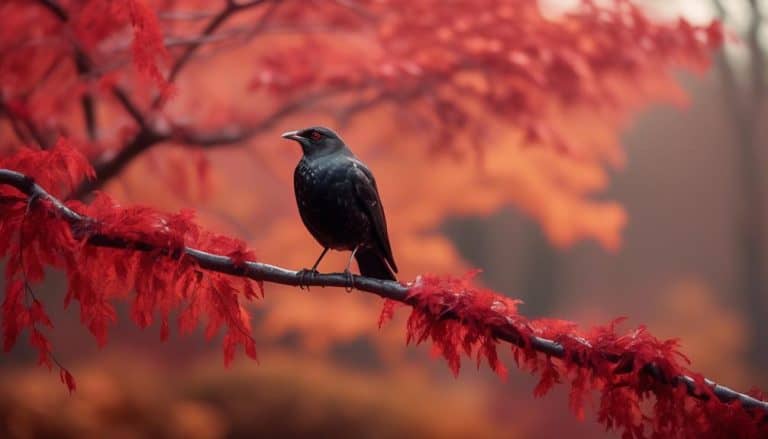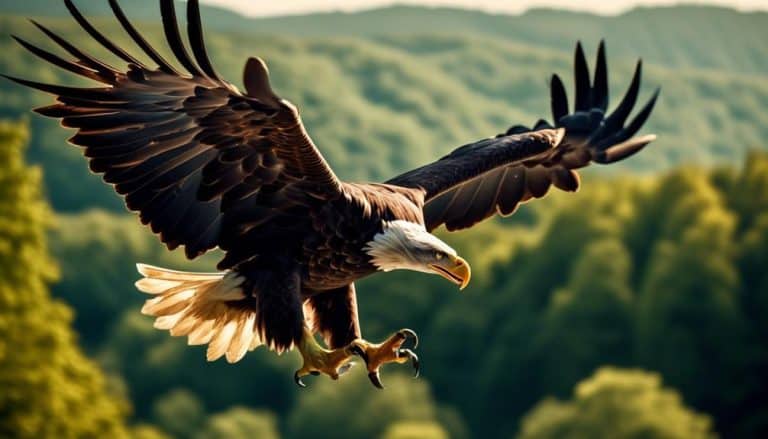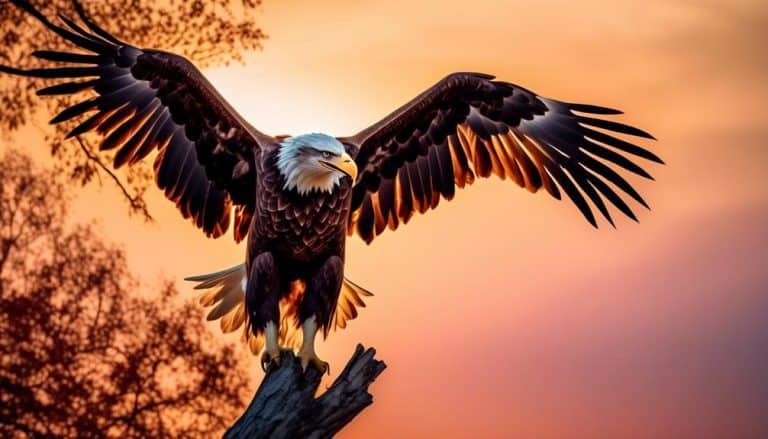As I stand beneath the Florida sun, my eyes are drawn to the subtle beauty of the grey birds that grace this enchanting state. With their muted hues and understated elegance, these avian creatures hold a mystique that beckons further exploration.
From the bustling cities to the tranquil wetlands, they inhabit a variety of habitats, making it a delight for bird enthusiasts to spot them. But what are these grey birds, and how can we identify them amidst the diverse feathered population of Florida?
Join me on this journey as we uncover the secrets of these enigmatic creatures, their migration patterns, and the efforts being made to protect them in the Sunshine State.
Common Grey Birds in Florida
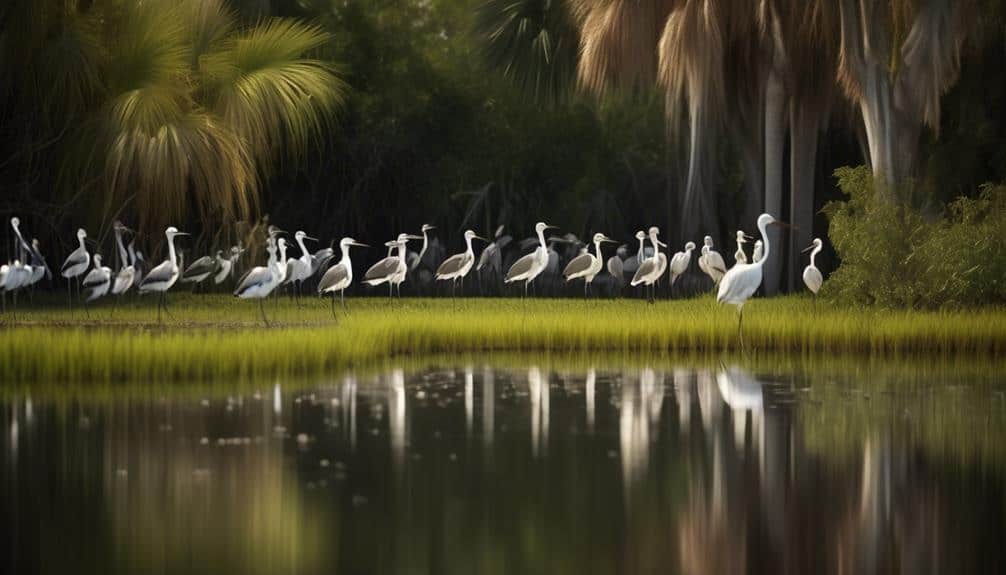
Common grey birds can be found throughout Florida, showcasing their unique adaptations and behaviors in various habitats.
Florida is home to a wide variety of grey bird species, displaying a remarkable diversity in their physical characteristics and behaviors.
One of the most common grey birds in Florida is the Mourning Dove (Zenaida macroura). This bird is known for its soft, mournful cooing sound and can be found in both urban and rural areas.
Another common grey bird species is the Gray Catbird (Dumetella carolinensis), which is known for its ability to mimic the sounds of other birds. This behavior is thought to serve as a territorial defense mechanism.
The Northern Mockingbird (Mimus polyglottos) is another grey bird species found in Florida. It's known for its impressive vocal abilities, with males singing a complex repertoire of songs throughout the day.
These grey birds play important roles in Florida's ecosystems, including seed dispersal and insect control. Studying their behavior and interactions with their environment can provide valuable insights into the ecological dynamics of the region.
Identification Tips for Grey Birds
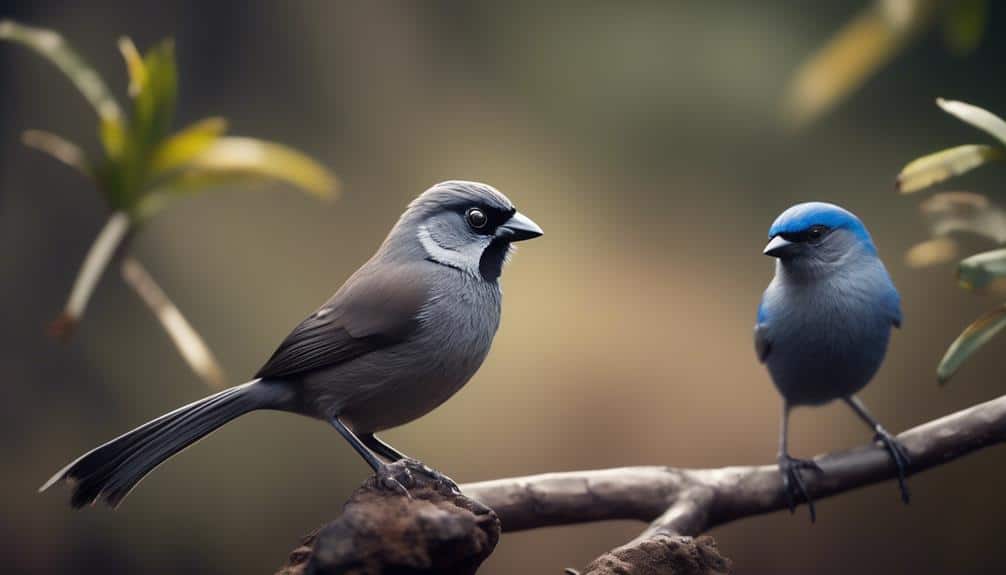
Grey birds can be challenging to identify due to their similar physical characteristics. However, with the right birdwatching techniques and grey bird photography tips, it's possible to distinguish between different species.
When observing grey birds in the field, it's important to pay attention to their size, shape, and behavior. Take note of the bird's overall size and compare it to other birds in the area. Look for distinctive features such as the shape of the bill, the length of the tail, or any patterns on the wings. Behavior can also provide valuable clues for identification. Some grey birds may have unique flight patterns or feeding behaviors that can help narrow down the possibilities.
Birdwatching techniques can be further enhanced by using grey bird photography. A good photograph can capture important details that might be missed during field observations. When photographing grey birds, it's essential to use proper lighting and focus on capturing the bird's key features. Pay attention to the angle of the light, as it can highlight important details like eye color or feather patterns. Additionally, using a telephoto lens can help capture more detailed images, allowing for better identification later on.
Grey Bird Habitats in Florida

Florida is home to a diverse range of habitats that provide important environments for various species of grey birds. These habitats play a crucial role in supporting the grey bird population and ensuring their survival.
Here are five key habitats in Florida that are particularly important for grey birds:
- Wetlands: Wetlands, such as marshes and swamps, offer rich food sources and ideal nesting sites for many grey bird species. These habitats provide a mix of open water, dense vegetation, and mudflats that are essential for their survival.
- Coastal Areas: Grey birds, including seagulls and pelicans, can be found along Florida's extensive coastline. These areas offer a variety of nesting habitats, including sandy beaches, rocky shores, and mangrove forests.
- Woodlands: Many species of grey birds, such as woodpeckers and thrushes, thrive in Florida's woodlands. These habitats provide ample food sources, such as insects and fruits, as well as suitable nesting sites in tree cavities or dense foliage.
- Urban Environments: Some grey bird species, like pigeons and sparrows, have adapted well to urban environments. They can be found in parks, gardens, and city centers, where they take advantage of human structures for nesting and feeding.
- Grasslands: Open grassy areas, such as prairies and pastures, attract various grey bird species, including meadowlarks and pipits. These habitats provide suitable nesting grounds and an abundance of insects and seeds for food.
Understanding the specific nesting habits and habitat preferences of grey birds is crucial for conservation efforts. With the grey bird population decline in Florida, it's essential to protect and preserve these habitats to ensure the survival of these unique species.
Grey Bird Migration Patterns
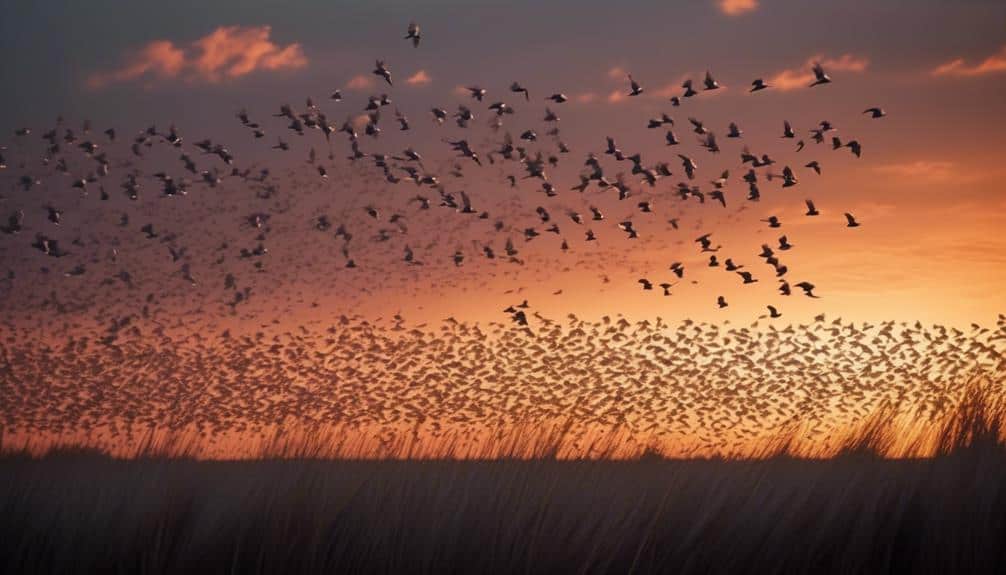
During their annual journeys, grey birds in Florida navigate vast distances to reach their preferred breeding and wintering grounds. Understanding the migration patterns of these birds is essential for studying their population trends and assessing the impact of climate change on their migration behavior.
Grey bird migration patterns in Florida vary depending on the species. Some species, such as the grey catbird and the grey-headed kingfisher, are year-round residents and don't migrate. However, many grey bird species in Florida exhibit seasonal movements, with populations migrating to and from the state.
The grey bird population trends in Florida can be influenced by various factors, including habitat loss, changes in food availability, and climate change. Climate change, in particular, can have a significant impact on grey bird migration patterns. Rising temperatures and changing weather patterns can alter the timing and duration of migration, affecting the ability of birds to find suitable breeding and wintering grounds. Additionally, changes in vegetation and food availability due to climate change can impact the success of grey bird populations during migration.
Studying grey bird migration patterns and understanding the impact of climate change on their behavior is crucial for conservation efforts. By monitoring population trends and identifying potential threats, we can take proactive measures to protect these birds and their habitats.
Conservation Efforts for Grey Birds in Florida
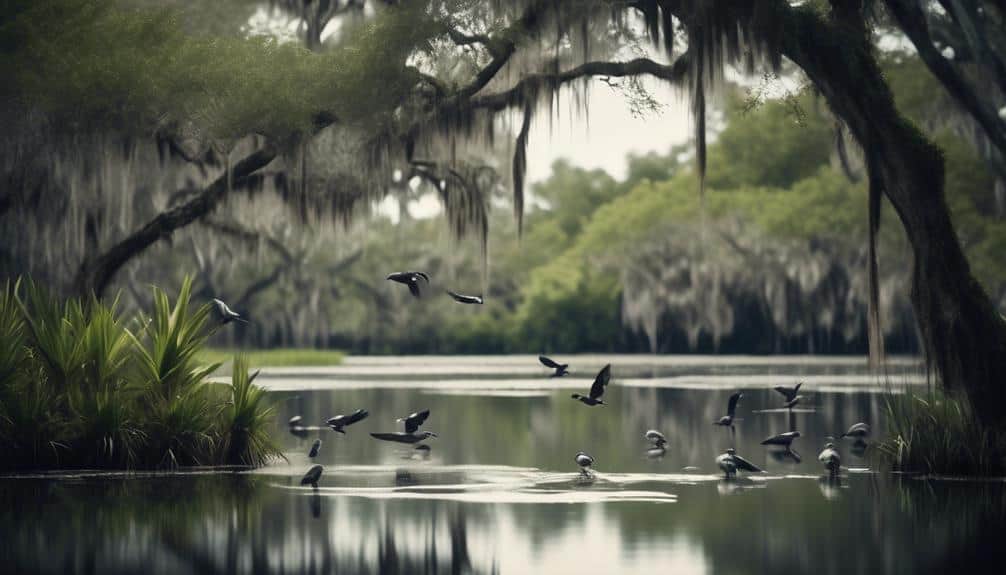
Efforts are being made to conserve grey birds in Florida through various conservation initiatives and habitat protection measures. The grey bird populations in Florida face several threats that impact their survival and well-being. These threats include habitat loss due to urbanization and deforestation, pollution from pesticides and other chemicals, climate change affecting their breeding and feeding patterns, as well as the presence of invasive species that compete for resources. Despite these challenges, there have been success stories in grey bird conservation in Florida.
- The establishment of protected areas and wildlife refuges provide safe havens for grey birds, allowing them to breed, nest, and forage without disturbance.
- Conservation organizations work diligently to raise awareness about the importance of grey bird conservation, advocating for their protection and implementing conservation strategies.
- Habitat restoration projects aim to create suitable habitats for grey birds by planting native vegetation and restoring wetlands, providing them with food sources and nesting sites.
- Collaborative efforts between researchers, government agencies, and local communities help monitor grey bird populations, identify threats, and develop effective conservation strategies.
- Public education programs engage individuals in citizen science initiatives, encouraging them to observe and report grey bird sightings, contributing valuable data for conservation efforts.
These conservation initiatives and measures are crucial in safeguarding the grey bird populations in Florida, ensuring their long-term survival and ecological balance.
Frequently Asked Questions
How Do Grey Birds in Florida Communicate With Each Other?
Grey birds in Florida communicate through a combination of vocalizations and body language. Their social behaviors and interactions play a crucial role in conveying messages and maintaining group cohesion.
What Is the Average Lifespan of Grey Birds in Florida?
The average lifespan of grey birds in Florida varies depending on their habitat preferences. Factors such as food availability, predation, and disease can influence their longevity. Further research is needed to provide more accurate data on this topic.
Are Grey Birds in Florida Known to Migrate to Other States During Certain Seasons?
Grey birds in Florida are known to migrate to other states during certain seasons. Their migration patterns vary, but many of them travel to their winter destinations in the southern parts of the United States.
Do Grey Birds in Florida Have Any Predators?
Grey birds in Florida face various predators that impact their population. These predators play a crucial role in shaping grey bird behavior and population dynamics. Understanding their impact is essential for conservation efforts.
Can Grey Birds in Florida Be Kept as Pets?
Keeping grey birds in Florida as pets can be subject to legalities and regulations. It is crucial to ensure suitable habitats for these birds. Compliance with local laws and providing appropriate care are essential for responsible pet ownership.
Conclusion
In conclusion, grey birds are a common sight in Florida and can be identified using specific characteristics such as plumage color and beak shape. They can be found in various habitats throughout the state, and their migration patterns vary depending on the species.
Conservation efforts are being made to protect and preserve these grey birds and their habitats. For instance, a case study conducted in the Everglades National Park showed that implementing habitat restoration measures resulted in an increase in the population of grey birds, highlighting the importance of conservation initiatives.

